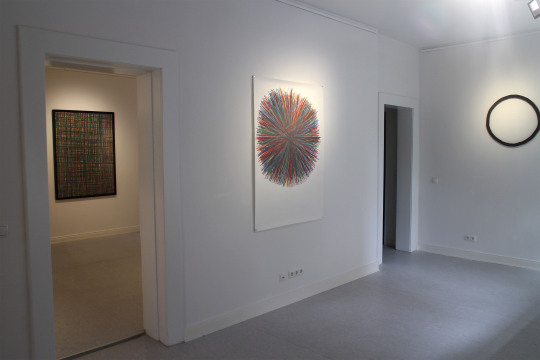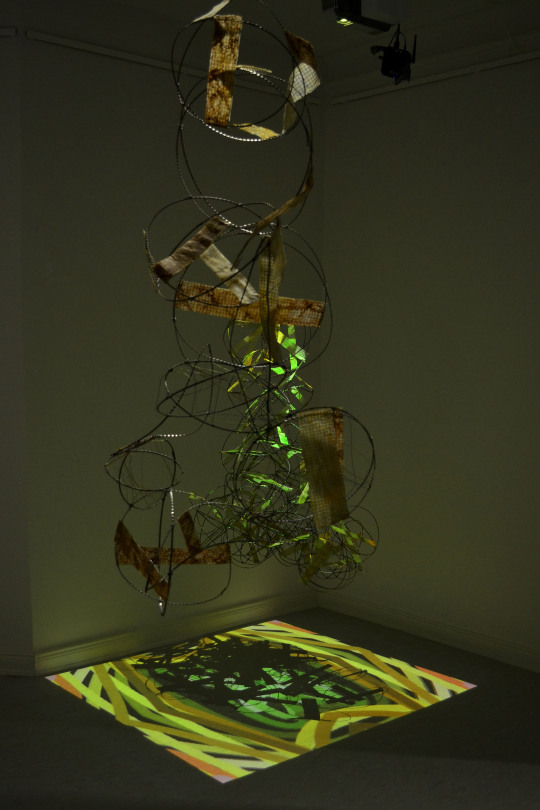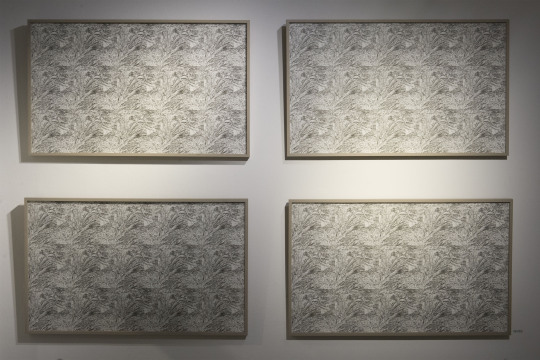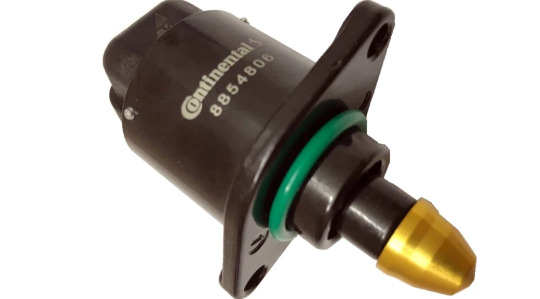#3D Magnetic Position Sensors
Explore tagged Tumblr posts
Text
youtube
Melexis Redefines the Market with 3D Magnetic Position Sensors
https://www.futureelectronics.com/resources/featured-products/infineon-psoc-4100s-max-for-home-automation. Melexis expands its portfolio of 3D magnetic position sensing solutions with the introduction of the MLX9042x series. These sensors are intended for cost-conscious automotive customers who need to measure absolute position accurately and safely in harsh and noisy environments over an extended temperature range. https://youtu.be/MhrNCdwdnJY
#Melexis#3D Magnetic Position Sensors#Magnetic Position Sensors#Melexis 3D magnetic position sensor#Melexis magnetic position sensor#MLX9042#sensors#automotive#absolute position#Melexis MLX9042#Melexis sensors#Youtube
2 notes
·
View notes
Text
youtube
Melexis Redefines the Market with 3D Magnetic Position Sensors
https://www.futureelectronics.com/resources/featured-products/infineon-psoc-4100s-max-for-home-automation. Melexis expands its portfolio of 3D magnetic position sensing solutions with the introduction of the MLX9042x series. These sensors are intended for cost-conscious automotive customers who need to measure absolute position accurately and safely in harsh and noisy environments over an extended temperature range. https://youtu.be/MhrNCdwdnJY
#Melexis#3D Magnetic Position Sensors#Magnetic Position Sensors#Melexis 3D magnetic position sensor#Melexis magnetic position sensor#MLX9042#sensors#automotive#absolute position#Melexis MLX9042#Melexis sensors#Youtube
0 notes
Text
Die Galerie in der Peterstraße Curating, Design, Production
Lisa Pappon and I opened a gallery in Peterstraße in 2016. The goal was simple: younger artists, classical media, weird energy. We kept it going into 2017. Sold some work. Made some shows we were proud of. Then we moved on.
Here are a few of them.
— Jonas Hinnerkort SAVE
Jonas formed his works within self-asserted systems. Most of the pieces were essentially drawings, using lines as markers of direction or movement. The central work featured black boards with silkscreened circles, each filled with colored chalk lines. They were mounted with magnets on a wooden frame, allowing the end user to determine the layout. I really responded to the modularity of the piece.

The circle reappeared in a wall sculpture, positioned to draw focus as you entered the gallery. A high-gloss black disc, its shape seemed hand-drawn: all shine, soft curves, hand-made energy.






— Dominique Bernadet, Katharina Langer, Karl Heinz Maukel Von der Insel auf das Festland
Katharina Langer, Karl Heinz Maukel, and Dominique Bernadet came to us through Honigfabrik in Wilhelmsburg. We responded to the eclectic energy of their work. Dominique showed bronze pieces that questioned the formal history of the medium. Katharina pushed realist and romanticist painting into the twenty-first century (only later did I realise her work could basically be called neo-formalist).




Karl Heinz combined the language of constructivist sculpture with found objects, adding geometric abstractions layered with video projections. We lit the gallery in subdued spotlights, partly to create an intimate chamber-like atmosphere, but also because Karl Heinz needed darkness for the projections. The result worked.




— Chuang Yi-Jou WEG/STRECKE
Yi-Jou works in stage design, but her roots in painting run deep. One could call her works neo-impressionist, but they were so much more than that. She would take images seen while traveling, transpose them onto the surfaces of 3D cubes, then paint the cubes on canvas. The humour of moving from 3D to 2D, with a wink and so much character, still makes me chuckle.






She also performed twice at the gallery during the Drunter & Drüber – Neustadt Festival: WEG/STRECKE and 2.5D Cube. In WEG/STRECKE, she danced over a paper runner, with movement sensors hidden under her costume. The sensors were wired to a small robot, which responded to her movement by drawing lines across the paper. Sick.
vimeo
Performed by: Chuang Yi-Jou Costume design: Isabel Wiethölter
In 2.5D Cube, she acted as the third dimension of a drawn cube spanning the gallery floor and two walls. Sick x 2(.5).
vimeo
Performed by: Chuang Yi-Jou Costume design: Kai-Chiang Lin
— Ivan Šuletić Gebäude und Pflanzen
Ivan works at the intersection of classical landscape painting and contemporary visual language. He creates massive cityscapes and landscapes, often by repeating a single detail until the canvas is filled, across formats as large as 200 × 240 cm.



His smaller ink works follow a similar logic, producing pieces that feel almost inhuman (superhuman?) in their precision. Classical training meets glitch sensibility, with a nod to post-internet aesthetics. Viewers often assumed the works were digitally produced, but every line was made by hand.


When I grow up, I’ll treat myself to a Šuletić original.



—
Die Gallerie in der Peterstraße Hamburg, 2016–2017
#curating#exhibitiondesign#productionwork#gallerylife#peterstrasse#jonashinnerkort#honigfabrik#karlheinzmaukel#katharinalanger#dominiquebernadet#chuangyijou#ivanšuletić#save#vonderinselaufdasfestland#wegstrecke#2point5dcube#gebaeudeundpflanzen#artschoolenergy#somebudgetchaos#2016#2017
0 notes
Text
#Infineon#XENSIV#3DSensor#Automotive#IndustrialAutomation#ConsumerElectronics#FunctionalSafety#IoT#SmartMobility#powerelectronics#powermanagement#powersemiconductor
0 notes
Text
#Infineon Technologies#XENSIV#AutomotiveSensors#3DSensing#VehicleElectronics#SmartMobility#SensorTechnology#Timestech#electronicsnews#technologynews
0 notes
Text
Global 3D Magnetic Sensor for Automotive Market : Forecast to 2032
Global 3D Magnetic Sensor for Automotive Market was valued at USD 1.35 billion in 2024 and is projected to reach USD 2.85 billion by 2032, growing at a CAGR of 9.80% during the forecast period (2025-2032).
3D Magnetic Sensor for Automotive Market Overview
The 3D magnetic sensor is a high-precision sensing device capable of detecting magnetic field components in three dimensions (X, Y, and Z axes). In automotive applications, these sensors are used to measure angular position, rotational speed, and linear motion in various systems such as power steering, pedal positioning, gear shifters, and battery management units.
These sensors leverage Hall effect or magneto-resistive technologies to deliver contactless measurement, improving reliability and durability. They are essential in modern vehicle architecture, offering low power consumption, compact size, and high accuracy under harsh environmental conditions, making them ideal for integration in both conventional and electric vehicles.
This report provides a deep insight into the global 3D Magnetic Sensor for Automotive Market, covering all its essential aspects. This ranges from a macro-overview of the market to micro details of the market size, competitive landscape, development trend, niche market, key market drivers and challenges, SWOT analysis, value chain analysis, etc.
The analysis helps the reader to shape the competition within the industries and strategies for the competitive environment to enhance the potential profit. Furthermore, it provides a simple framework for evaluating and assessing the position of the business organization. The report structure also focuses on the competitive landscape of the Global 3D Magnetic Sensor for Automotive Market. This report introduces in detail the market share, market performance, product situation, operation situation, etc., of the main players, which helps the readers in the industry to identify the main competitors and deeply understand the competition pattern of the market.
In a word, this report is a must-read for industry players, investors, researchers, consultants, business strategists, and all those who have any kind of stake or are planning to foray into the 3D Magnetic Sensor for Automotive Market in any manner.
Get Full Report : https://semiconductorinsight.com/report/global-3d-magnetic-sensor-for-automotive-market/
3D Magnetic Sensor for Automotive Key Market Trends :
Integration with ADAS Systems: Growing demand for advanced safety and driver assistance systems is driving 3D sensor adoption.
Rise in EV Production: The global transition to electric vehicles is increasing the demand for precise sensing components.
Miniaturization of Components: Ongoing innovation in sensor size reduction enables broader application across vehicle types.
Increased Use in Smart Mobility Solutions: Integration with connected and autonomous vehicle systems is accelerating.
Expansion into Emerging Markets: Rapid automotive sector growth in Asia-Pacific and Latin America is creating new opportunities.
3D Magnetic Sensor for Automotive Market Regional Analysis :
North America:Strong demand driven by EVs, 5G infrastructure, and renewable energy, with the U.S. leading the market.
Europe:Growth fueled by automotive electrification, renewable energy, and strong regulatory support, with Germany as a key player.
Asia-Pacific:Dominates the market due to large-scale manufacturing in China and Japan, with growing demand from EVs, 5G, and semiconductors.
South America:Emerging market, driven by renewable energy and EV adoption, with Brazil leading growth.
Middle East & Africa:Gradual growth, mainly due to investments in renewable energy and EV infrastructure, with Saudi Arabia and UAE as key contributors.
3D Magnetic Sensor for Automotive Market Segmentation :
The research report includes specific segments by region (country), manufacturers, Type, and Application. Market segmentation creates subsets of a market based on product type, end-user or application, Geographic, and other factors. By understanding the market segments, the decision-maker can leverage this targeting in the product, sales, and marketing strategies. Market segments can power your product development cycles by informing how you create product offerings for different segments.
Market Segmentation (by Application)
Commercial Vehicle
Passenger Vehicle
Market Segmentation (by Type)
Linear 3D Magnetic Sensors
Rotary 3D Magnetic Sensors
Key Company
Infineon
NXP
Melexis
ams
Allegro MicroSystems
STMicroelectronics
Get A Detailed Sample Report : https://semiconductorinsight.com/download-sample-report/?product_id=96427
Key Drivers
Growth of Electric Vehicles (EVs): EV platforms demand high-precision sensors for battery and drivetrain management, boosting sensor adoption.
ADAS Adoption: Advanced Driver Assistance Systems require multiple sensors for accurate positioning and control functions.
Technological Advancements: Innovations in Hall effect and magneto-resistive technologies enhance performance and reduce power consumption.
Key Restraints
High Implementation Costs: The cost associated with integrating advanced sensor systems can deter adoption in budget vehicles.
Sensor Calibration Complexity: Integrating and tuning 3D sensors with existing systems requires specialized knowledge and time.
Component Shortages: Global semiconductor supply chain disruptions impact the availability of key sensor components.
Key Opportunities
Emerging Market Growth: Rapid urbanization and vehicle electrification in developing countries offer untapped potential.
Strategic Partnerships: Collaborations between OEMs and sensor providers can accelerate development and market reach.
Aftermarket Applications: Growing retrofit market for vehicle upgrades offers additional sales channels.
Key Challenges
Performance in Harsh Conditions: Maintaining accuracy in extreme temperatures and magnetic fields is difficult.
Standardization Issues: Lack of uniform sensor integration standards across OEMs creates compatibility hurdles.
Workforce Skill Gaps: Shortage of trained professionals for sensor testing and integration slows down deployment.
Customization of the Report
In case of any queries or customization requirements, please connect with our sales team, who will ensure that your requirements are met.
Related Reports :
Contact us:
+91 8087992013
0 notes
Text
Beyond Snoring: How Are MADs Revolutionizing Sleep Apnea Treatment?
Why Are Mandibular Advancement Devices Crucial for Sleep Disorders?
Mandibular Advancement Devices (MADs) are a class of oral appliances used primarily in the treatment of snoring and mild to moderate obstructive sleep apnea (OSA). These devices work by repositioning the lower jaw (mandible) and tongue forward, thereby increasing the patency of the upper airway during sleep and preventing its collapse. Unlike Continuous Positive Airway Pressure (CPAP) machines, which can be bulky and sometimes uncomfortable for patients, MADs offer a less invasive and often more convenient alternative. Their importance stems from their ability to significantly improve sleep quality, reduce the symptoms of sleep apnea (such as snoring, excessive daytime sleepiness), and mitigate associated health risks like cardiovascular issues. As awareness of sleep disorders grows, so does the demand for effective and patient-friendly solutions like MADs.
What Technological Advancements Are Shaping MAD Design and Efficacy?
The field of Mandibular Advancement Devices is witnessing continuous technological advancements, primarily focused on enhancing patient comfort, customization, and therapeutic efficacy.
A major innovation is the widespread adoption of 3D scanning and printing technologies in MAD fabrication. This digital workflow allows for the creation of highly customized and comfortable devices tailored precisely to a patient's unique jaw structure and dental anatomy. Traditional MADs often involved multiple physical impressions and adjustments, which could be cumbersome. With 3D scanning, a digital impression of the patient's mouth is taken, and then the MAD is designed using CAD (Computer-Aided Design) software before being precisely manufactured with 3D printing. This not only improves the fit and comfort, leading to higher patient compliance, but also streamlines the manufacturing process, potentially reducing production time and costs.
Beyond custom fit, manufacturers are integrating smart technology into MADs. This includes the incorporation of sensors that monitor sleep patterns and jaw position throughout the night. These sensors can provide valuable data to both patients and clinicians, allowing for objective assessment of treatment effectiveness. For example, some devices can track jaw advancement, identify specific sleep positions that exacerbate apnea, or even offer real-time feedback. This data can help optimize the device's settings and improve overall patient experience and therapeutic outcomes.
Another innovation is the development of MADs with novel propulsion mechanisms. For instance, some new designs utilize magnetic attraction (like the Mandibular Advancement Magnetic Appliance, MAMA) to induce a mesializing movement of the jaw. This mechanism offers a different approach to traditional MADs, which often rely on mechanical linkages, and can be less affected by a patient's mandibular posture during sleep. The use of advanced materials like thermally molded PET-G (Polyethylene terephthalate glycol) also allows for the fabrication of thinner and more comfortable devices compared to traditional resin ones, enhancing resistance to fluid corrosion and reducing bulk inside the oral cavity. These material innovations contribute to increased patient comfort and device durability.
What Is the Broader Impact and Future Outlook for MADs?
The advancements in MAD technology are having a significant impact on sleep disorder management. The increased affordability and accessibility of MADs, particularly with advances in production and the possibility of purchasing customized devices, are making them a more viable option for a wider range of patients, especially in developing economies. This is crucial for individuals who may find CPAP machines or surgical procedures cost-prohibitive.
The growing public consciousness of sleep disorders is also a key driver. As more people become aware of the health risks associated with untreated sleep apnea and snoring, there's an increased demand for convenient and effective solutions. Education, coupled with better access to healthcare services and sleep studies, is making patients more proactive in seeking treatment.
The future of MAD technology is promising, with continuous research and development focused on creating even more sophisticated and user-friendly devices. This includes exploring further integration with telemedicine and remote monitoring platforms, allowing clinicians to track patient progress and make adjustments without the need for frequent in-person visits. The aim is to develop MADs that are not only highly effective but also seamlessly integrate into a patient's lifestyle, ensuring long-term compliance and improving the overall quality of life for individuals suffering from sleep apnea and snoring. As technology improves and insurance coverage expands, the adoption of MADs is expected to continue its upward trajectory globally.
Contact:
Market Research Future®
99 Hudson Street,5Th Floor
New York, New York 10013
United States of America
Phone:
+1 628 258 0071(US)
+44 2035 002 764(UK)
Email: [email protected]
Website: https://www.marketresearchfuture.com
0 notes
Text
Magnetic Sensor Market Forecast to Reach USD 8–9 Billion by 2032
Magnetic Sensors Market to Exceed USD 8 Billion by 2033, Driven by EV, Automation, and Smart Tech Demand
The Magnetic Sensors Market, valued at approximately USD 4.5 billion in 2024, is expected to grow steadily and reach USD 8–9 billion by 2033. This expansion reflects a compound annual growth rate (CAGR) of 6–8%, fueled by the rapid proliferation of electric vehicles, advancements in industrial automation, rising demand in consumer electronics, and growing Internet of Things (IoT) applications.

To Get Free Sample Report : https://www.datamintelligence.com/download-sample/magnetic-sensors-market
Key Market Drivers
1. Automotive Industry Electrification As the shift toward electric and hybrid vehicles continues, magnetic sensors play a central role in applications like anti-lock braking systems (ABS), steering angle detection, throttle position sensing, and battery management. The integration of advanced driver assistance systems (ADAS) is also driving demand for highly accurate Hall-effect and magnetoresistive sensors.
2. Rise in Consumer Electronics and Wearables Miniaturized magnetic sensors are now standard in mobile phones, tablets, and wearable devices for functions like electronic compassing, gesture control, and spatial navigation. The trend toward compact, multifunctional smart devices is accelerating demand across OEMs and component suppliers.
3. Industry 4.0 and Smart Manufacturing Magnetic sensors support real-time monitoring in industrial automation environments. They provide position, proximity, and rotational speed feedback in CNC machinery, robotic arms, elevators, and conveyor systems ensuring accurate performance in dynamic manufacturing conditions.
4. Growth in Renewable and Clean Energy Applications Magnetic sensors are used in wind turbine pitch systems, solar panel tracking, and electric grid condition monitoring. As global investment in renewable energy infrastructure rises, these sensors are increasingly vital to system control and energy efficiency.
Technology Segmentation & Market Trends
Hall-Effect Sensors Dominate Hall-effect sensors accounted for more than 50% of global revenue in 2023. They are valued for their reliability, compact design, and broad applicability in automotive and consumer electronics.
Magnetoresistive Sensors Gaining Ground Giant magnetoresistive (GMR) and tunneling magnetoresistive (TMR) sensors are being adopted for high-precision, low-power applications in robotics, medical devices, and automation control systems.
MEMS-Based Magnetic Sensors and 3D Integration Microelectromechanical systems (MEMS) magnetic sensors are enabling ultra-compact, low-cost 3D field sensing in smartphones and wearables. Their rise is central to the IoT movement and portable device innovation.
Regional Market Insights
Asia-Pacific Leads Global Demand Asia-Pacific dominates with over 45% market share, led by China, Japan, and South Korea. The region’s strong consumer electronics production base and leadership in electric vehicle manufacturing have solidified its position. Japan, in particular, has advanced high-end magnetic sensor design and exports globally.
United States Market Outlook The U.S. magnetic sensors market is driven by continued growth in ADAS development, aerospace and defense technologies, and industrial digitalization. Strong R&D investments and manufacturing automation have boosted adoption in both the public and private sectors.
European Innovation and Regulation Europe’s automotive innovation and renewable energy initiatives fuel magnetic sensor use. Germany, in particular, drives demand through automotive mechatronics, factory robotics, and wind energy monitoring systems.
Emerging Growth Opportunities
Automated Guided Vehicles (AGVs) and Drones Magnetic sensors are essential for orientation and obstacle navigation. Growth in smart logistics, drone surveillance, and delivery services is enhancing their role in autonomous guidance.
Healthcare & Medical Imaging In MRI systems and wearable diagnostic devices, magnetic sensors are crucial for position tracking and motion compensation. Sensor miniaturization is expanding opportunities in health monitoring devices.
High-Precision Robotics Sensors enabling feedback-controlled movement in robotics and cobots (collaborative robots) are opening high-value industrial and defense applications.
Smart Infrastructure and Building Automation In smart buildings, magnetic sensors are used for security (door/window detection), elevator systems, and HVAC control offering energy-saving advantages and enhanced monitoring.
Get the Demo Full Report : https://www.datamintelligence.com/enquiry/magnetic-sensors-market
Challenges in the Market
Price Pressure and Commoditization: Low-cost alternatives in saturated markets can hinder profit margins and innovation incentives.
Magnetic Interference Issues: High electromagnetic noise environments can disrupt performance unless proper shielding and design optimization are applied.
Raw Material Supply Risks: The availability of rare earth materials impacts sensor magnet production, making the industry vulnerable to geopolitical shifts.
Stringent Automotive and Industrial Certification: Reliability and safety standards for automotive-grade sensors require long testing cycles, increasing time to market for new products.
Conclusion
The global magnetic sensors market is evolving rapidly, supported by strong demand from automotive systems, consumer electronics, industrial automation, and renewable energy technologies. With a projected valuation surpassing USD 8–9 billion by 2033, the sector offers promising opportunities for sensor manufacturers, OEMs, and system integrators.
As technology continues to evolve, innovations in magnetoresistive and MEMS-based sensor designs will unlock new capabilities, while advanced signal processing and integration techniques will further elevate sensor precision and versatility. Key players investing in scalable manufacturing, regional expansion, and application-specific R&D will lead the next era of magnetic sensing solutions.
0 notes
Text
Grids of Sensors in Non-Commutative Space
There's an idea of "non-commutative geometry" which seeks to view non-commutative algebras as if they were dual to some "non-commutative space" in the same way that commutative $C^*$-algebras (over the complex numbers) can be viewed as being the spaces of continuous complex valued functions on the locally compact Hausdorff space of that algebra's "spectrum" (or, specifically, the algebra of such functions that "vanish at infinity").
Some have considered this in the context of quantum mechanics, with the idea that, just as the operators for position along some axis and momentum along that axis, don't commute, perhaps the same is true for position along one axis and position along a different (orthogonal) axis. (I think there is the idea that this might help prevent some singularities in quantum gravity or something? idk. There's some kind of motivation for it.
This idea seems rather counterintuitive to me. With position and momentum not commuting (and their commutator being a constant, rather than some operator that could be zero in some states), and therefore things not having a simultaneously well defined position and momentum, this isn't too too hard to accept. Being able to say "here's the wavefunction in the position basis" and "here's the wavefunction in the momentum basis", seems nice enough. But, for position in one axis and in another axis to be not simultaneously well definable, seems harder to imagine. Like, if there was a maximum that the product of uncertainty in position and in momentum, could be.
The idea comes to mind of those simulations of "how it would look if you were walking around some city, if the speed of light was super slow". And then the question becomes, "if the degree of non-commutativity between different axiis was non-negligible, what would it look like?"
If one wants to consider the algebra for a quantum mechanical system with two non-commutative dimensions of space, one option is to consider the unital C^* algebra generated by self-adjoint operators q_x, q_y, p_x, p_y , subject to the relations: [q_x,p_x] = i hbar , [q_y, p_y] = i hbar , [q_x, p_y] = 0, [q_y, p_x] = 0 , [q_x, q_y] = i theta .
If one then takes the Hamiltonian for a 2D quantum simple harmonic oscillator, but using these q_x and q_y, and p_x and p_y , in place of the usual position and momentum operators, one can still do things like finding the spectrum of the Hamiltonian, etc. It turns out that one can even define some modified operators Q_x, Q_y, P_x, P_y in terms of our q_x, q_y, p_x, p_y , such that [Q_x, Q_y]=0 , P_x = p_x, P_y = p_y, and the Q_x, Q_y and the P_x, P_y have the same commutation relations with each-other as the normal position and momentum operators do. So, one can end up describing wavefunctions in the Q_x, Q_y basis or in the P_x, P_y basis, with Q_x and Q_y acting sorta like position, even though they aren't our actual position operators, and if we do this, then our simple harmonic oscillator defined in terms of q_x, q_y, p_x, p_y , ends up, when viewed in terms of Q_x, Q_y, P_x, P_y, being like a simple harmonic oscillator except with a term added for a magnetic field (proportional in strength to theta, and inversely proportional to hbar)
This is all stuff that I read about just recently. I'm not sure how it works in 3D. I imagine something similar, but the way of defining the Q_x and Q_y is probably substantially more complicated?
My idea (which others may have had before and investigated thoroughly, idk, I haven't done a literature search) is to, in order to think about "what things would look like in a world with non-commutative geometry (where the non-commutativity is large enough to be noticable at macroscopic scales) is to consider something like a "camera" made of a grid of detectors. Even though we don't really have a good notion of "points in space" in this kind of setting, we can still define an operator for "the distance between two particles" ( sqrt((q_{x,i} - q_{x,j})^2 + (q_{y,i} - q_{y,j})^2) ) and use this to write a Hamiltonian where there is a potential energy term which encourages each particle ("sensor") to be around some prescribed distance to each of its immediate neighbors, and then consider a ground state for this system. (Oh, q_{x,i} and q_{x,j} should commute with each-other btw. Operators for particle i and operators for particle j should commute with each-other. ) In order to say something to the effect of "our grid of sensors is located here in our lab, not moving", I think the grid should be labeled by pairs of integers between -N and N , and that the 4 corners should be "pinned" at certain coordinates (proportional to N) by replacing the position operators for those particles with just constants which should be coordinate for the particle in question. This is maybe somewhat unnatural because that would imply that at these corners the sensors there would have well defined coordinates in both x and y simultaneously (which would normally be impossible for particles in this non-commutative space), but we could just have those 4 particles not behave as sensors I guess. Anyway, if we take the limit as N goes to infinity, they would be far away from the origin, so hopefully this unnatural pinning wouldn't matter too much to things near the middle of the grid?
Then, if we want to ask about the location of some particle that isn't part of our grid of sensors, we can look at the projections for "is the distance between the particle and sensor j less than (some distance)?". Of course, these projections might not commute with each-other..? But, even if they don't, we can still use them for a Hamiltonian that represents particles being detected at whatever sensor they are nearby, and look at the probability distribution over "what detector was it detected at" that way, without needing to have "it is at detector i" and "it is at detector j" be commuting projections.
Oh, also, maybe should look at the limit where the masses of each the detectors are large (and equal to each-other), and/or where hbar is small, so that way the position vs momentum uncertainty doesn't play as large a role, just the uncertainty between x and y position?
If anyone has any thoughts on this, I'd like to hear it. (If you are aware of someone who has done this already, I'd especially like to hear it. I want answers, and I don't have time to work through stuff to find them, at least for now.)
#physics#mathpost#non-commutative geometry#quantum mechanics#math#I should be finishing writing dissertation not thinking about distractions like this!#mathblr
1 note
·
View note
Text
Stepper Motors in Cars: The Unsung Heroes Behind Smooth Engine Performance
Have you ever wondered what keeps your car’s engine idling smoothly, manages airflow precisely, or ensures your acceleration feels just right? The answer might surprise you — it’s a stepper motor.
While small and often overlooked, stepper motors are critical to modern automotive systems. From controlling the throttle to regulating idle speed, these components operate behind the scenes to keep your engine efficient and your driving experience seamless.
What Exactly Is a Stepper Motor?
A stepper motor is a brushless electric motor that moves in precise, discrete steps. Each electrical pulse sent to the motor turns it slightly — often 1.8 or 0.9 degrees per step. This design allows for incredibly accurate positioning without needing feedback sensors. That’s why they’re widely used not just in cars, but also in 3D printers, CNC machines, and robotics.

Two Main Types of Stepper Motors in Automotive Use
Understanding stepper motors begins with recognizing their two core types:
Permanent Magnet (PM): Uses a rotor with permanent magnets. These motors offer high torque and precision, ideal for controlling critical systems like throttle position.
Variable Reluctance (VR): A simpler design without permanent magnets, generally cheaper and better for high-speed applications.
Inside a Stepper Motor: Key Components
Every stepper motor is made up of:
Rotor: The rotating core, often magnetized
Stator: The stationary housing with coils
Windings: Energized in a specific order to move the rotor
Shaft, bearings, and housing: Ensure smooth, reliable rotation
Electrical connectors: Link the motor to the vehicle’s ECU
Together, these parts enable the motor to deliver pinpoint control over movement.
Why Stepper Motors Matter in Your Car
In modern vehicles, stepper motors handle several essential tasks:
✅ Idle Speed Control (ISC)
Regulates air intake when the engine is idle, preventing stalls and maintaining fuel efficiency.
✅ Electronic Throttle Control (ETC)
Replaces the traditional throttle cable, providing smoother acceleration and better fuel economy.
✅ HVAC Airflow Management
Controls air dampers in your car’s ventilation system for accurate climate control.
Where Are Stepper Motors Located?
Typically found near or within the throttle body or intake manifold, stepper motors are designed for easy access and quick replacement.
Manual vs. Automated Stepper Motors
Some early or simplified designs use manual stepper motors, operated through basic circuits or switches — great for educational projects or legacy devices. However, modern vehicles rely on electronically controlled versions paired with stepper motor drivers for seamless automation.
Stepper Motor Drivers: The Hidden Brains
A stepper motor needs a driver to function. These drivers convert electrical pulses from the Engine Control Unit (ECU) into specific currents for the motor windings. Advanced drivers use microstepping for ultra-smooth movement and reduced noise.
Step-by-Step: How a Stepper Motor Works in a Car
The ECU analyzes RPM and engine load
Sends control pulses to the stepper motor driver
The driver activates stator windings in sequence
The rotor rotates step by step
This precise control loop is essential to smooth engine operation.
Signs Your Stepper Motor Might Be Failing
Here’s what to watch for:
Rough idling or RPM fluctuations
Check Engine Light with codes P0505–P0508
Increased fuel consumption (up to 15%)
Sudden stalling during deceleration
Why Do Stepper Motors Fail?
Common causes include:
Wrong driver settings → Overheating or damage
Loose wiring or poor connectors
Excessive engine heat or poor ventilation
Mechanical wear in bearings or shaft
Environmental exposure (dust, moisture)
Low-quality parts
Lack of preventive maintenance
Troubleshooting a Faulty Stepper Motor
Diagnosing issues usually involves:
Checking wiring and voltage with a multimeter
Testing resistance (normal range: 30–80 ohms)
Ensuring the driver sends correct pulse signals
Running test cycles with diagnostic tools
Listening for unusual noise or vibration
When Should You Replace a Stepper Motor?
Replace the motor if you notice:
Out-of-range resistance readings
Abnormal friction or binding in the shaft
Persistent error codes or failed test cycles
Do Stepper Motors Need Lubrication?
Generally no — these motors are sealed and maintenance-free. But if contamination occurs, use automotive-grade contact cleaner or silicone lubricant to clean the shaft (never apply oil to the windings).
How Much Do Stepper Motors Cost?
Prices (as of winter 2024 in Iran): 500,000 to 2,000,000 Tomans, depending on:
Car brand (OEM vs. aftermarket)
Motor specs (full-step vs. microstep)
Presence of feedback sensors
Choose a motor compatible with your vehicle model and ECU system.
Thinking About Removing It? Think Again.
Removing the stepper motor without ECU reprogramming can cause:
Idle speeds over 1500 RPM
Engine management system errors
Emissions violations (Euro 4+)
Legal trouble in regulated regions
Does It Affect Acceleration?
Not directly, but malfunctioning stepper motors can cause:
Delayed throttle response
Unstable air-fuel ratios
Reduced EGR system performance
Final Thoughts: Small Part, Big Impact
Despite their size, stepper motors are fundamental to engine stability, throttle accuracy, and fuel efficiency. Understanding how they work — and how to maintain or replace them — is vital for both DIY car enthusiasts and professional technicians.
A healthy stepper motor means a smoother drive, better fuel economy, and fewer unexpected repairs down the road.
0 notes
Text
Breakthrough in Deep-Layer Detection: High-Precision Application of JPMG Proton Magnetometer for Magnetic Anomaly Detection in 50m Overburden Layers
2. Overview of Magnetic Exploration Technology 2.1 Genesis of Magnetic Anomalies Magnetic minerals (e.g., magnetite, hematite, titanomagnetite) exhibit varying magnetization intensities under Earth’s magnetic field, causing local magnetic variations (“magnetic anomalies”). In 50m overburden environments, these signals are typically attenuated by surface disturbances, EM interference, and anthropogenic factors, complicating detection.
2.2 Challenges in Overburden Magnetic Survey • Surface interference (structural steel, pipelines) • Topographic effects on data consistency • Weak signals requiring high-sensitivity magnetometers • Balancing detection precision with spatial resolution
3. Technical Advantages of JPMG Proton Magnetometer 3.1 Operating Principle Utilizing nuclear magnetic resonance (NMR) technology, JPMG measures magnetic flux density through hydrogen proton precession frequency in geomagnetic fields, achieving ±0.1nT accuracy – the most stable absolute magnetometer currently available.
3.2 Core Technical SpecificationsParameterSpecificationMeasurement Range20,000-100,000 nTAccuracy±0.1nTNoise Suppression<0.05nTSampling RateUp to 10HzProbe Cable Length>30m extensionPower SupplyRechargeable Li-ion battery (>30h operation)
3.3 Deep Overburden Detection Performance Maintains reliable anomaly identification in complex geological conditions (soft soil, weathered crust, fill materials) through: • Digital filtering + AGC technology for noise suppression • Temperature-stable operation for prolonged surveys • Integrated GPS navigation and auto-positioning system
4. Typical Application Cases Case 1: Urban Pipeline Avoidance Survey Background: Pre-construction survey for Metro Line 2 in East China coastal city requiring non-destructive detection of subsurface structures (<50m depth). Implementation:
5m line spacing with 1m station intervals
GPS-synchronized positioning Results:
Identified buried pipelines and steel pile foundations
3D anomaly mapping guided construction planning
Case 2: Shallow-buried Iron Ore Delineation Background: Weathered gravel overburden (30-50m) in North China concealing potential iron deposits. Method:
2m×0.5m grid survey with Geosoft data processing Verification:
Drilling confirmed ore bodies matching magnetic anomalies
Enhanced SNR compared to conventional magnetometers
5. Engineering Value Across ApplicationsApplicationValue PropositionMineral ExplorationOre boundary delineation, reducing drilling costsEngineering GeologySubsurface structure identificationEnvironmental GeologyIllegal waste disposal detectionArchaeologyCultural relic localization
6. Competitive AnalysisParameterJPMGCompetitor XAdvantageAccuracy±0.1nT±0.2nTSuperior resolutionSampling Rate0.5s/point1s/pointFaster scanningInterfaceChinese GUIEnglish LCDLocalization advantagePriceModerateHighCost-effectiveness
7. Integrated Exploration & Future Trends 7.1 Multi-method Integration
ERT/IP for comprehensive geoelectrical-magnetic imaging
Seismic reflection for structural interface analysis
7.2 Intelligent Platform Integration
UAV-mounted aerial magnetic surveys
Cloud-based data synchronization
Multi-sensor fusion (LiDAR/hyperspectral)
7.3 Technical Evolution
Enhanced sensitivity (<0.05nT)
AI-driven anomaly recognition
Environmentally-friendly field operations
8. Conclusion The JPMG Proton Magnetometer demonstrates exceptional performance in 50m overburden environments through its high-precision measurement, anti-interference capabilities, and intelligent data management. As geological exploration enters the era of AI and unmanned operations, JPMG’s platform compatibility positions it as a next-generation solution for multi-scenario applications.
0 notes
Text
Chinese Office Furniture Suppliers: The Pillar of the Global Supply Chain
At the China Pavilion at Expo 2020 Dubai, a smart workstation system featuring brainwave sensing technology caused a stir—when the user’s attention wavered, the desk automatically raised to standing mode, and the lighting shifted to 6000K cool white to refocus cognitive energy. This system reflects the transformation of Chinese office furniture suppliers from "manufacturing OEM" to "technology output." In 2023, China’s office furniture exports exceeded $22.8 billion, accounting for 39% of the global market share. Its core competitiveness has shifted from cost advantages to technological innovation and full-chain service capabilities.
1. Smart Manufacturing: Redefining Production Efficiency
Breakthrough in Flexible Production Systems A leading factory in Guangdong has implemented an intelligent workshop, breaking down orders into 158 standard modules via an MES system, supporting 150,000 custom combinations. Laser cutting machines have positioning accuracy of ±0.03mm, and six-axis robotic arms assemble 12 hardware parts per minute with precision. The modular production line’s switch time has been reduced from the traditional 72 hours to just 23 minutes, while the cost of single items has dropped by 18%.
Green Manufacturing Innovations Zhejiang Yongyi has introduced a plasma coating line that reduces the curing time of water-based paint from 8 hours to 9 minutes, while VOC emissions are reduced to 0.5g/m³ (EU standard is 30g/m³). Combined with a rooftop photovoltaic system, the energy consumption for producing a single office chair is only 37% of the industry average, and its carbon footprint is reduced by 62%.
Digital Twin Quality Control Shenzhen’s Haofang Technology has built a virtual simulation platform for end-to-end process control, conducting 2,000 collision tests before production. An AI visual inspection system scans product surfaces with 0.005mm precision, reducing defect rates from the industry average of 2.3% to 0.18%. Its self-developed stress cloud map analysis algorithm limits product lifespan prediction errors to within ±3%.

2. Technology R&D: From Follower to Leader
Breakthrough in Smart Interaction Systems A company in Hangzhou, in collaboration with MIT, developed the HoloDesk system, which projects a 120° visible hologram on the desk using a nano-grating array. Gesture operation delay is only 8ms, and it supports multi-user collaborative editing of 3D models. After implementing it in BMW's design center, the new car development cycle was reduced by 41%.
Original Achievements in Material Science The Ningbo Institute of Materials Technology and Engineering, Chinese Academy of Sciences, developed a graphene-reinforced composite board with a bending strength of 580MPa, 63% lighter than traditional MDF. The surface is coated with a lotus-leaf-like hydrophobic layer, achieving a liquid contact angle of 168° and reducing cleaning energy consumption by 82%. This technology has been patented in 32 countries, with a price 55% lower than similar European products.
Innovations in Ergonomics for Health Guangdong Jiechang’s intelligent height-adjustable system uses 16 pressure sensors to monitor posture in real-time, adjusting the desk height by ±3mm every 15 minutes. Clinical data shows that this technology reduces the peak pressure on the lumbar disc by 37%, and employees' tolerance for prolonged sitting is extended by 2.1 times.

3. Global Services: Full-Chain Solutions
48-Hour Fast Delivery Network A supplier in Suzhou has established a global distributed warehouse system, setting up smart hub warehouses in Hamburg, Los Angeles, and Singapore. With a blockchain-based clearance system, customs clearance time is reduced to 28 minutes. Combined with the China-Europe freight train + drone shuttle system, European customers can receive their orders within 51 hours.
Modular Installation System A company in Dongguan has developed a magnetic quick-assembly structure that reduces the standard workstation installation time from 4 hours to 18 minutes. All components support tool-free disassembly and reassembly, reducing maintenance and replacement costs by 73%. Its patented connectors have a tensile strength of up to 2.3 tons and pass 8.0-level earthquake simulation tests.
Full Lifecycle Management Shanghai ZhenDan has introduced a "Product-as-a-Service" model: customers pay based on usage time, and old furniture is recycled using nano-level surface regeneration technology, restoring 98% of its original performance. This model reduces initial investment by 65%, and the material recycling rate reaches 91%.

4. Certification Systems: The Key to Opening Global Markets
Comprehensive International Standards Leading enterprises typically hold 12 international certifications, including BIFMA, GREENGUARD, and FSC. One company's flame-retardant boards passed the UK BS5852 standard test, enduring 43 minutes at 950°C without deformation, far exceeding the EU EN1021-1 requirement of 30 minutes.
Customized Certification Services For the Middle East market, a company developed a dust-proof structure that meets GSO standards, and desert environment tests showed that internal components ran for 2,000 hours without failure during sandstorms. The earthquake-resistant design for North American customers passed the ICC-ES AC156 certification, withstanding 0.6g seismic acceleration.
Digital Trust System Using industrial blockchain technology, all processes from timber traceability to production energy consumption are recorded on the blockchain. TÜV certification from Germany confirms that a company’s product carbon footprint data has 99.97% credibility, allowing the company to enter the EU’s green procurement list.
In the showroom of a hidden champion enterprise in Shenzhen, a quantum-sensing office system is optimizing the global supply chain in real-time: it adjusts inventory at the Hamburg warehouse based on a snowstorm warning in New York, and activates emergency production at a Vietnamese factory after monitoring the shipping schedule in the Strait of Malacca. This signals that Chinese suppliers have transitioned from passively receiving orders to proactively providing services, becoming the intelligent hub of the global office ecosystem. When "Made in China" evolves into "Intelligent Manufacturing from China," choosing a Chinese office furniture supplier means selecting a productivity solution for the next decade. Choose Ekintop office furniture, and we will provide you with the best solution.
0 notes
Text
0 notes
Text

Exploring Motion Capture for VFX
Motion capture (mocap) has revolutionized the world of visual effects (VFX), enabling filmmakers and animators to capture the nuances of human movement and translate them into realistic digital characters. With the rising demand for skilled VFX artists, specialized training programs, like a VFX course in Pune, are becoming increasingly popular. From Hollywood blockbusters to video games and virtual reality experiences, mocap has become an indispensable tool for creating immersive and believable digital worlds. This exploration delves into the fascinating realm of motion capture for VFX, examining its techniques, applications, and impact on the entertainment industry.
Understanding Motion Capture
Motion capture involves recording the movements of actors or objects and translating that data into digital form. This data can then be used to animate digital characters or objects, creating realistic and lifelike movements.
Key Techniques in Motion Capture
Several techniques are employed in motion capture, each with its own strengths and limitations:
Optical Motion Capture: This is the most widely used technique, employing multiple cameras to track reflective markers attached to an actor's body. The cameras capture the movement of these markers, which is then processed by software to generate 3D data representing the actor's motion.
Inertial Motion Capture: This technique utilizes sensors attached to the actor's body to track their movement. These sensors measure acceleration and orientation, providing data that can be used to reconstruct the actor's motion without the need for external cameras.
Magnetic Motion Capture: This technique uses magnetic fields to track the position and orientation of sensors attached to the actor. It offers high accuracy and is less susceptible to occlusion (markers being blocked from view) compared to optical systems.
Applications in VFX
Motion capture has found widespread applications in VFX across various mediums:
Film and Television: Mocap is extensively used in films and television shows to create realistic digital characters, creatures, and stunts. It allows actors to portray fantastical beings and perform complex actions that would be impossible or dangerous to achieve through traditional methods.
Video Games: Mocap brings video game characters to life, capturing the nuances of human movement for more immersive and believable gameplay experiences. It enables developers to create realistic animations for a wide range of actions, from walking and running to fighting and dancing.
Virtual Reality: Mocap plays a crucial role in creating interactive and immersive VR experiences. It allows users to control virtual avatars with their own movements, enhancing the sense of presence and realism.
Animation: Mocap can be used to animate characters in animated films and television shows, providing a foundation for realistic movement that can be further enhanced by animators.
Benefits of Motion Capture
Mocap offers several advantages over traditional animation techniques:
Realism: Mocap captures the subtleties of human movement, creating more realistic and believable animations.
Efficiency: Mocap can significantly speed up the animation process, reducing the time and effort required to create complex movements.
Performance Capture: Mocap can capture not only body movements but also facial expressions and finger movements, enabling animators to create truly lifelike digital characters.
Cost-Effectiveness: While the initial investment in mocap equipment can be significant, it can ultimately save time and resources compared to traditional animation methods, especially for complex projects.
Challenges and Limitations
Despite its many benefits, mocap also presents some challenges and limitations:
Technical Expertise: Setting up and operating mocap systems requires technical expertise and specialized knowledge.
Data Cleanup: Raw mocap data often requires cleaning and processing to remove noise and errors before it can be used for animation.
Artistic Interpretation: While mocap provides a foundation for realistic movement, animators still need to apply their artistic skills to refine and enhance the captured data, ensuring it aligns with the desired style and emotional expression.
Cost: High-end mocap systems can be expensive, making them less accessible to independent filmmakers and animators.
The Future of Motion Capture
Motion capture technology continues to evolve, with new advancements pushing the boundaries of what's possible:
Wireless Systems: Wireless mocap systems offer greater freedom of movement and reduce setup complexity.
Markerless Motion Capture: Emerging markerless mocap technologies eliminate the need for actors to wear reflective markers, streamlining the capture process.
Artificial Intelligence: AI is being used to enhance mocap data, automating cleanup tasks and even generating realistic animations from limited data.
Conclusion
Motion capture has become an integral part of the VFX landscape, enabling the creation of stunningly realistic digital characters and immersive experiences. Aspiring VFX artists can gain expertise in mocap techniques through specialized training at a VFX institute in Pune, equipping them with the skills to thrive in this dynamic field. As technology advances and new techniques emerge, mocap will continue to play a vital role in shaping the future of entertainment, blurring the lines between the real and the digital.
0 notes
Text
Buy Zero Setter, ER Collet & Carbide Ballnose Online
In the realm of modern machining, precision, reliability, and efficiency are crucial. Whether you're working with CNC machines, lathes, or milling equipment, achieving flawless results hinges on using the right tools. Among these tools, the Zero Setter, ER Collet, and Carbide Ballnose are indispensable. Together, they form a powerful trio that enhances machining accuracy, productivity, and product quality.
This blog explores the features, applications, and benefits of these essential tools, offering insights into how they can elevate your machining processes.

1. Zero Setter: The Foundation of Precision
A zero setter is a must-have tool for machinists who demand accuracy in their setups. It helps establish the zero point for CNC machines, ensuring that every operation starts from the correct position.
Features of a Zero Setter
High-Precision Sensor: Detects the exact tool height or workpiece alignment with micron-level accuracy.
User-Friendly Design: Easy to use, even for beginners, with clear indicators such as LEDs for feedback.
Durable Construction: Built to withstand tough industrial environments, ensuring long-term reliability.
Magnetic Base: Provides stability and prevents movement during operation.
Applications
Tool Height Calibration: Ensures the cutting tool is set to the exact height required for the job.
Workpiece Alignment: Simplifies the process of aligning the workpiece with the machine’s coordinate system.
Multi-Tool Setups: Facilitates seamless transitions between tools in a single machining setup.
Benefits of Using a Zero Setter
Enhanced Accuracy: Minimizes errors in machining by ensuring precise starting points.
Reduced Setup Time: Speeds up the calibration process, allowing for faster production cycles.
Cost Efficiency: Reduces material wastage and the need for rework.

2. ER Collet: Securing Tools with Confidence
An ER Collet is a vital component of tool-holding systems, designed to secure cutting tools in place during machining. Its versatility and reliability make it an industry-standard in precision machining.
Features of ER Collets
Versatile Design: Compatible with a wide range of tool shank sizes, thanks to its flexible compression range.
High Clamping Force: Provides a secure grip on tools, ensuring stability during high-speed operations.
Concentricity: Maintains excellent runout control, enhancing machining accuracy and tool life.
Durable Materials: Made from hardened steel for extended lifespan and resistance to wear.
Applications
Tool Holding: Ideal for holding end mills, drills, taps, and other cutting tools in CNC machines or milling setups.
High-Speed Machining: Ensures stability and precision during high-speed operations.
Prototyping and Production: Suitable for both one-off prototypes and mass production runs.
Benefits of Using ER Collets
Increased Precision: Maintains tool alignment for superior machining accuracy.
Improved Tool Life: Reduces vibration and tool wear by providing a secure grip.
Cost Savings: Enhances productivity by minimizing tool changes and downtime.

3. Carbide Ballnose: The Ultimate Tool for Complex Contours
A Carbide Ballnose is a specialized end mill designed for creating intricate shapes and smooth finishes. Its rounded tip makes it ideal for 3D machining and sculpting.
Features of Carbide Ballnose Tools
Rounded Tip: Allows for precise contouring, slotting, and pocketing.
High-Performance Material: Made from solid carbide, offering exceptional hardness and heat resistance.
Sharp Cutting Edges: Ensures smooth finishes and reduces the need for secondary processing.
Coatings for Longevity: Available with advanced coatings like TiN or TiAlN for enhanced durability and reduced wear.
Applications
3D Machining: Used in industries like aerospace, automotive, and mold-making for sculpting complex geometries.
Finishing Operations: Provides smooth surface finishes on materials such as metals, plastics, and composites.
Slotting and Pocketing: Suitable for creating grooves and pockets in intricate designs.
Benefits of Carbide Ballnose Tools
Superior Surface Finish: Produces fine finishes, eliminating the need for additional polishing.
High-Speed Performance: Maintains cutting efficiency even at high RPMs.
Versatility: Handles a wide range of materials, from soft plastics to hardened steels.
How These Tools Work Together
In machining operations, the Zero Setter, ER Collet, and Carbide Ballnose complement each other to deliver unparalleled results:
Setup Precision with Zero Setter:Start by using the zero setter to calibrate the tool height and align the workpiece. This ensures that all machining operations begin from an accurate reference point.
Secure Tool Holding with ER Collet:Use an ER collet to firmly hold the carbide ball nose or other tools in place. The collet’s high clamping force ensures stability and reduces runout, which is crucial for precise cuts.
Achieve Smooth Finishes with Carbide Ballnose:Once the setup is complete and the tool is securely held, the carbide ball nose can be used to create intricate designs and achieve high-quality finishes. Its sharp edges and durable material ensure efficiency and longevity.
Tips for Choosing the Right Tools
When selecting tools for your machining operations, consider the following:
Material Compatibility: Ensure the tool and holder are suitable for the material being machined.
Precision Requirements: Choose tools with high accuracy and minimal runout for demanding applications.
Durability: Opt for tools made from high-quality materials to withstand wear and tear.
Ease of Use: Select tools that are user-friendly and easy to integrate into your workflow.
Conclusion
The combination of a zero setter, ER collet, and carbide ball nose can revolutionize your machining process by enhancing precision, reducing setup time, and improving productivity. These tools are versatile, durable, and essential for achieving superior results in modern manufacturing.
Invest in high-quality tools like those offered by JaiBros to ensure reliable performance and long-term cost savings. Whether you’re working on intricate designs or high-volume production, these tools are your key to success in machining.
Upgrade your workshop today and experience the difference precision tools can make!
0 notes